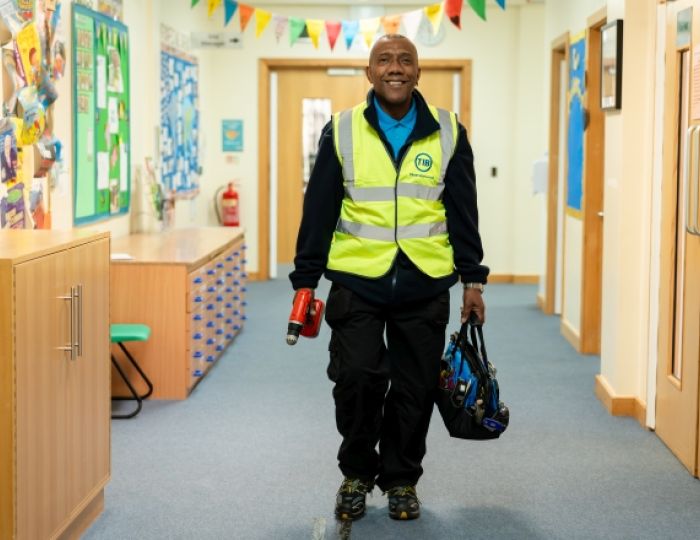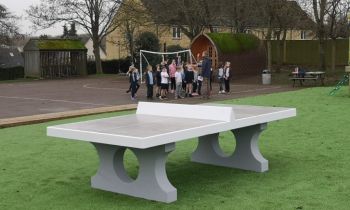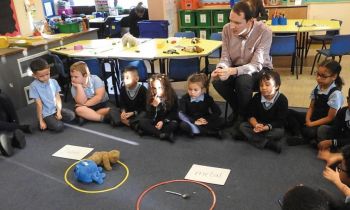Funding cuts have been felt throughout our schools in recent years, and CPD budgets have been some of the biggest casualties. Schools can no longer afford to send senior staff to expensive conferences, with overnight stays and travel costs, and networking opportunities have dwindled as a result.
Conference content is useful, but for many, the opportunity to sit and spend time with colleagues from other settings is by far the most useful part of external CPD events.
Just getting out of the office can be difficult enough for many busy school leaders, so getting out of school completely can be a huge challenge.
So how should school leaders ensure that they keep abreast of the best practice, that they stay alert and receptive to new ideas and that they nurture relationships with peers in other schools? The easy answer is, to go visit them.
Get real
We all spend time on social media, probably too much time for many. It’s quick, easy, constantly available and provides a great way of keeping in touch with people and their news.
We can read about the latest ideas and successes that other educators have implemented in their schools, and we can read all about the stories behind their success.
But you can never really know a school until you’ve seen it, felt it, tasted it and absorbed the very spirit of it. And you can only do that by being there.
Visiting another school is a great idea for so many reasons, not least of which is that it’s free and can be arranged whenever it is mutually convenient. But don’t just turn up for a natter and gossip, a school leader’s time is valuable, so here’s how to make the most of the opportunity:
Think about your top two school improvement priorities, or your personal targets, and do some research to find out the the best examples of what you’re trying to achieve. That could mean checking some schools out online, or asking around for recommendations of local expertise from colleagues, or your LA advisor.
When you make contact, try and do so at a time when your counterpart is likely to be available. Don’t phone in the middle of a busy day and expect an immediate invite. If they have a PA, speak to them and explain why you’re making contact.
An email might be another softer method of getting in contact, but be sure you’re emailing them directly and not a generic info@ email address which might be filtered by the admin team.
Remember to explain why you have contacted them rather than any other school - flattery will get you a long way, so be sure to mention how you’re looking for excellence and that you would love to see how they are delivering it.
Education is what we do, so the vast majority of senior leaders will be very happy to support a colleague who is looking to improve their practice.
Be as clear as you can about the purpose of your visit, and give some suggestions if there are specific things or people you’d like to see. A general tour of the school might be nice, but if there’s limited time you might want to skip it.
Unless your visit is specifically to see facilities and classrooms, you might not gain much. Remember one set of toilets and desks are pretty much like another!
If you are invited to visit, make sure you keep the date. We all know how packed our diaries can get, but don’t be tempted to reschedule or cancel if things are busy.
CPD is an essential part of our own self-improvement, and if we invest time in our personal learning aims, our schools will benefit as a result. Others will have given up their time to meet you, so be sure to make the most of what’s been offered.
As you approach the day, make a list of things to ask about, things to see and ideas you may have. It’s not just about what another school is currently doing, but also a way to sound ideas out with another local expert who might know your catchment and your community as well as you do.
It’s instinctive in most education leaders to promote the very best that their school has to offer, so don’t be surprised to be shown the trophy cabinet, the best teacher and a glowing set of statistics.
And while that’s lovely to see, what you need to know is how they managed it, if they can maintain it and how much it costs to fund. Focus on the differences between your two schools, rather than the positives.
If they are doing something differently to you, ask about the risks of their method, how long it took to bed in and if they experienced any problems along the way.
Similarly, ask if they tried other methods that didn’t work out so well. If not, why not, what are the pitfalls that they experienced and what would they do differently if they could.
Funding
Ask about their financial situation too. Excellence is generally expensive, so find out how they fund it. If you’ve carried out an ICFP (Integrated Curriculum and Financial Planning) exercise at your school, take along your findings and compare your financial KPIs to theirs.
Compare staffing ratios, contact times, average teacher cost and their TLR structure. A leaner or cheaper model doesn’t necessarily make a more effective school. Sometimes it’s about choosing the most effective areas on which to focus your limited financial resources.
If the school you are visiting aren’t already in your benchmarking set, check out their financial profile before you go and ask about any areas where your expenditure or income and significantly different.
No two schools are alike, so ask about their staffing structures, both teaching and business support. Many office and technical functions have evolved over time, so it’s always useful to review how others do it.
Governance is another key area to ask about – are there any differences in how their governing body operate, and if so, is it working?
Wellbeing
However long you have for your visit, remember to save time to talk about wellbeing. Yours and theirs. Ask how they are finding the pressure of the role and what they do to cope with the difficult times.
There can’t be many school leaders who haven’t experienced stressful and difficult times, so this could be a useful time to let off a bit of steam and share some support in return.
And finally, remember to give something back. If you’re asking probing questions, be sure to share your own information freely too. Offer a reciprocal visit in return, or consider how some of your other leadership colleagues or middle leaders might benefit from meeting up.
Whatever differences we face in our school settings we all share a common aim - to serve and support the children and families in our local community and to provide the very best education that we can.
Why wouldn’t we share our very best practice and success to allow every child to experience the best we have to offer.
Hilary Goldsmith is a school business leadership consultant.










